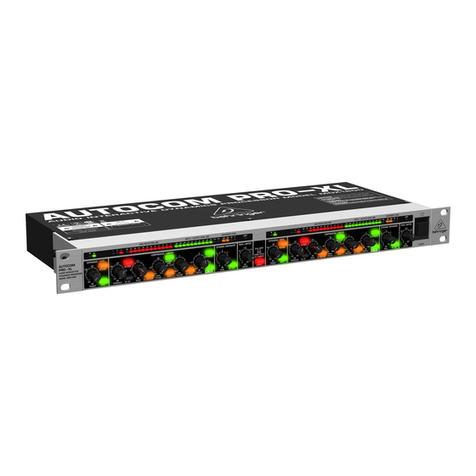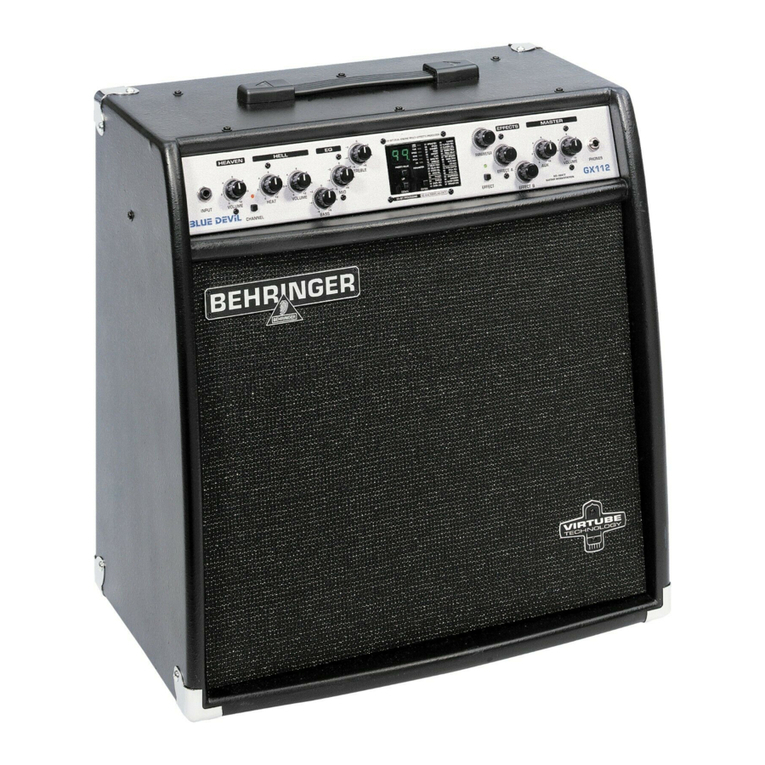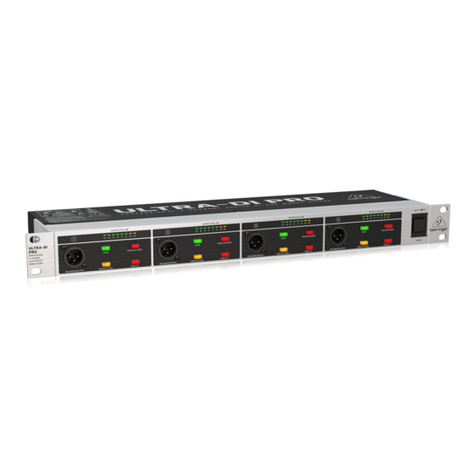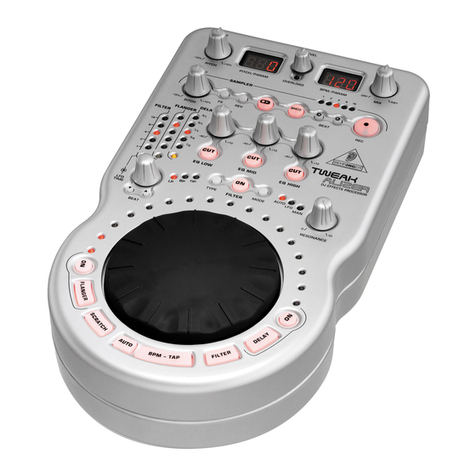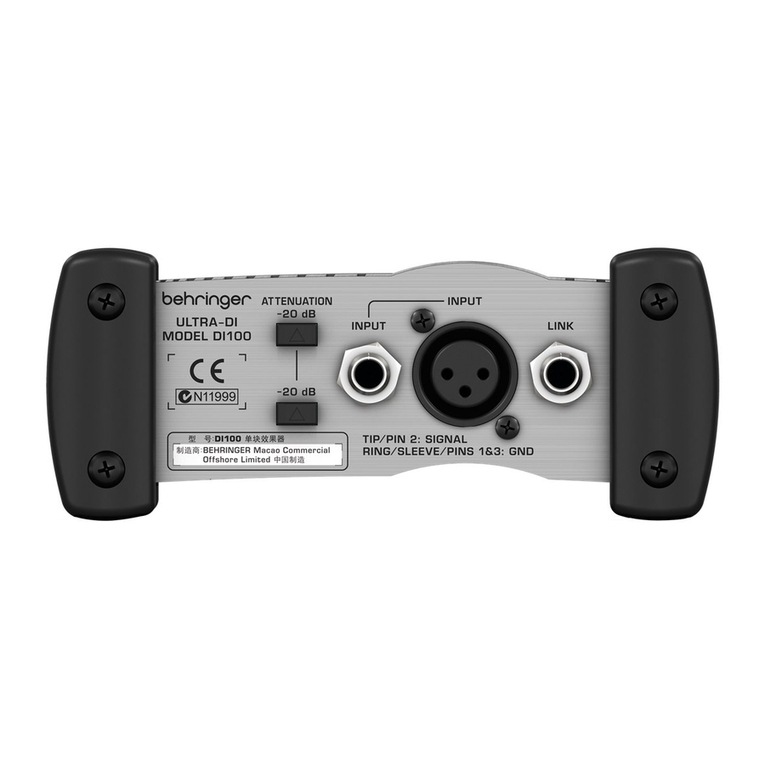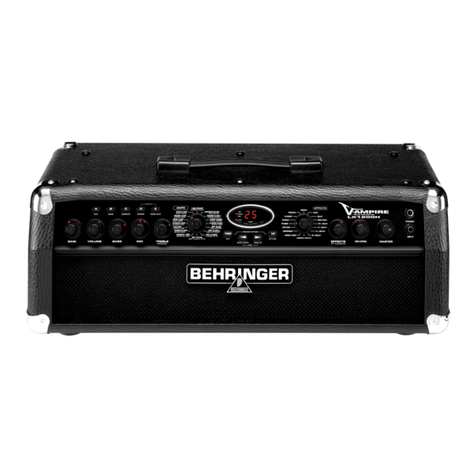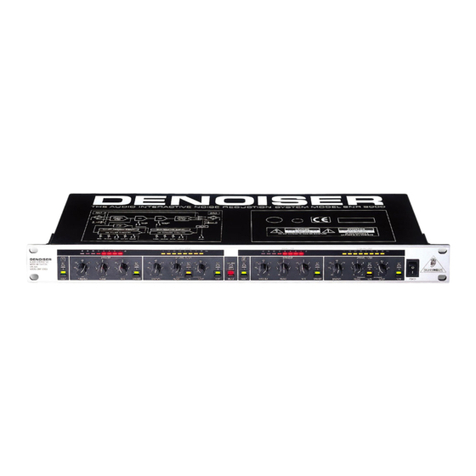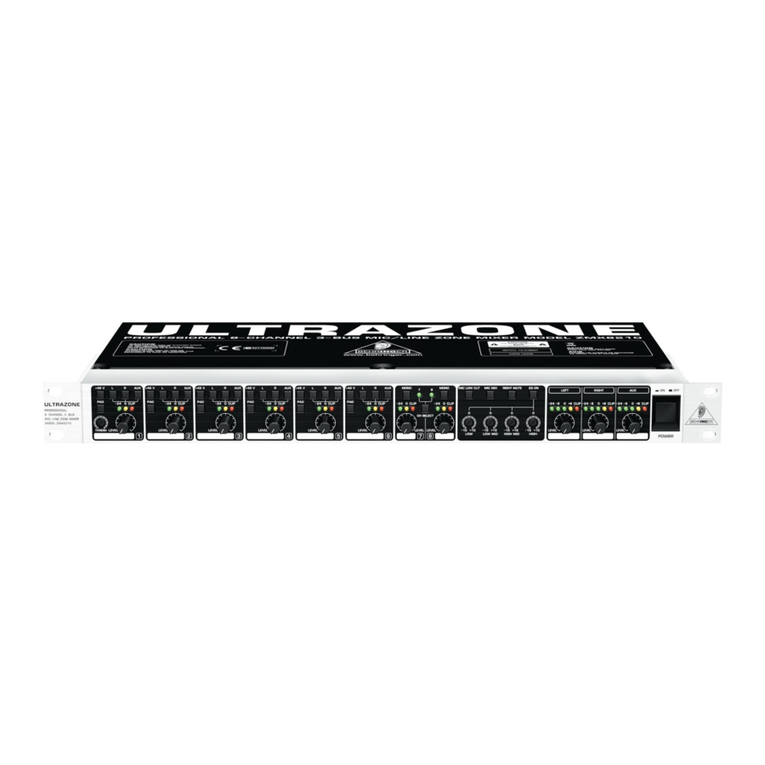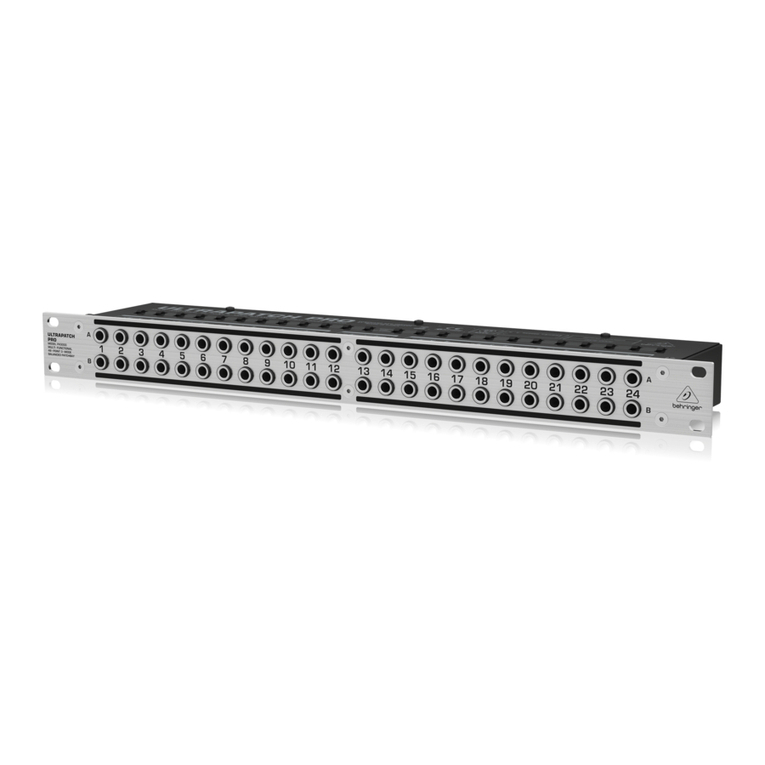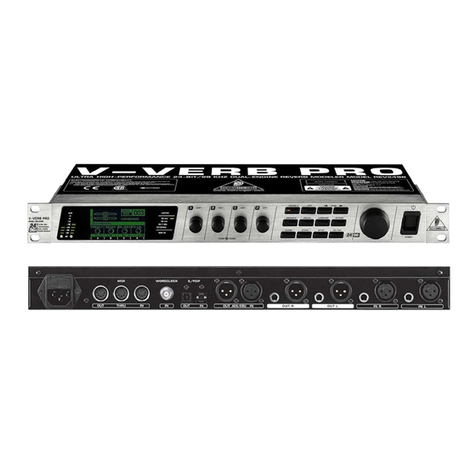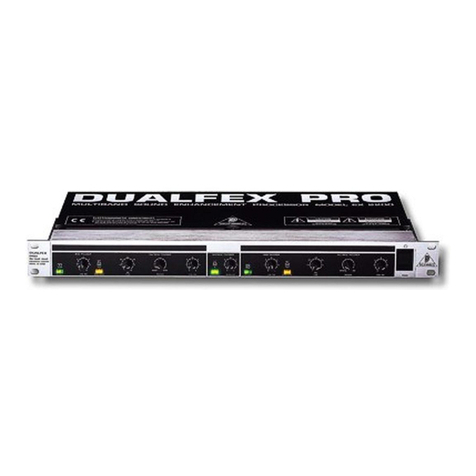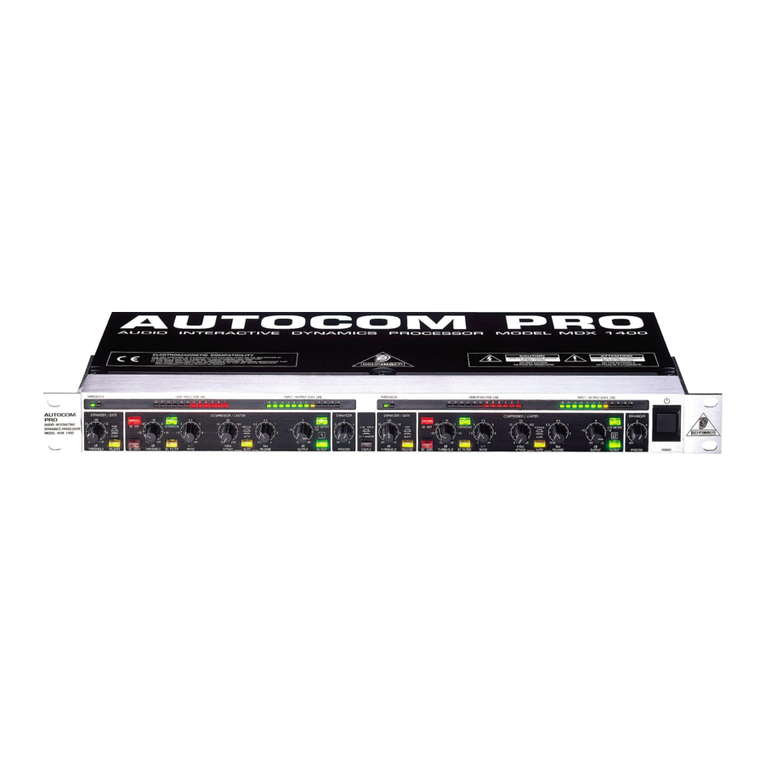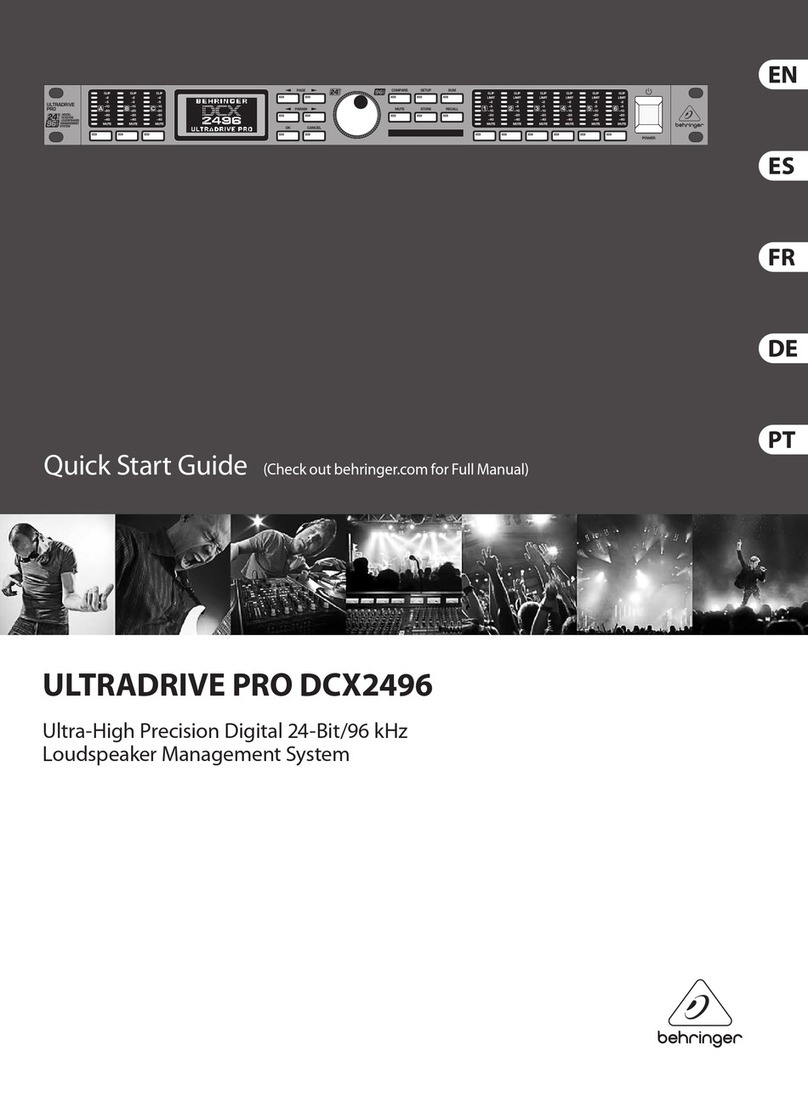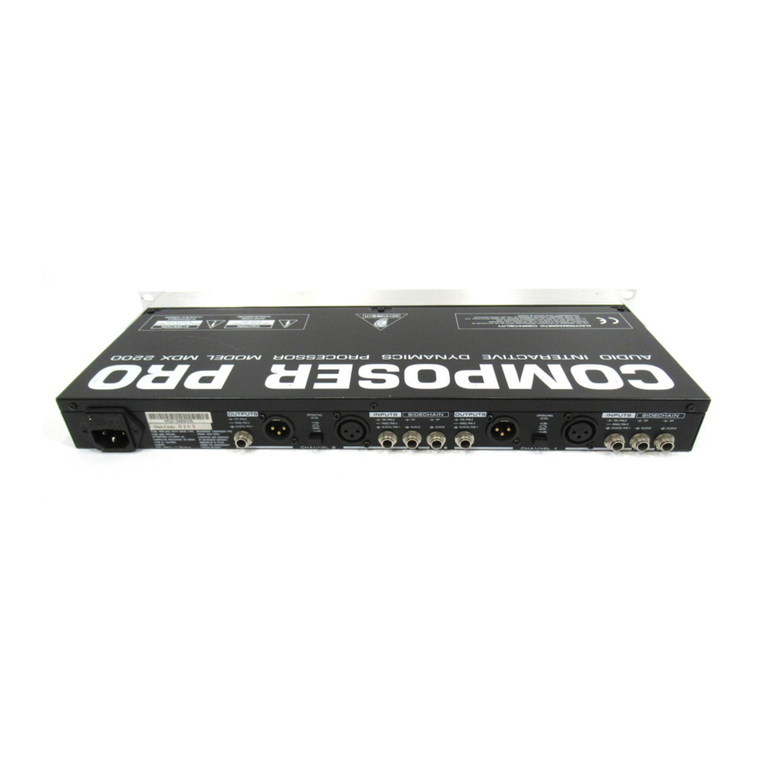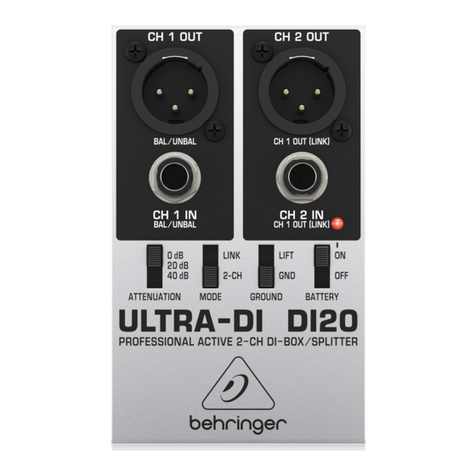
ULTRA-DI DI600P
Thank you for showing condence in Behringer products by purchasing the
ULTRA-DI DI600P. The DI600P is a high-performance passive direct injection
box.
◊ Please read the safety instructions that appear at the end
of this document.
Being on stage or in the studio, musicians often look for ways to connect
certain signal sources directly to the mixing console. Even though this
approach has obvious advantages, there are still some technical hurdles
obstructing its implementation. For example, keyboards seldom feature
balanced outputs, and guitars can not be directly connected to mixing
consoles because of the high impedance of guitar signals.
The DI600P lets you directly tap into a high-impedance, unbalanced
signal—for example, the signal between a guitar and a guitar amp.
From there on, you can feed the signal directly to a mixing console.
1. Control Elements
(1)
(3)
(4)
(5)
(6)
(2)
Fig. 1: Top view
(1) Use the INPUT (¼" TS) connector for connecting signal sources.
(2) OUTPUT (¼" TS). This is the unbalanced parallel output. Connect it to
the input of your backline or monitor amplier.
Because the connectors (1) and (2) are wired in parallel, the OUTPUT
connector can be used both as an input and as a direct unbalanced output
of the INPUT signal. For the latter, you can for example connect OUTPUT
with the input of a monitor amplier.
(3) OUTPUT (XLR): This is the balanced mic-level output. Use a
high-quality balanced microphone cable to establish connection.
(4) Using the GND LIFT (ground lift) switch, you can fully separate input
and output grounding. Depending on how the equipment to which
your DI600P is connected is grounded, using the GND LIFT switch lets
you lower hum noise or ground loops. When the GND LIFT switch is in
LIFT position, the ground connection is interrupted.
(5) The INST/AMP attenuation switch (30 dB) increases the operating
range of the DI600P considerably, from low signal levels of a
high-impedance mic or a guitar (INST), all the way to speaker
connectors of a guitar amplier (AMP).
(6) Switchable FILTER for guitar applications (7.5 kHz, -3 dB).
The SERIAL NUMBER of the DI600P is located at the bottom.
2. Applications
2.1 Connecting an instrument signal
Input
Output
Instrument Input Microphone Input
Out
Fig. 2: Guitar →DI-box →guitar amp/mixer
This illustration shows the standard application of a DI-box. The signal
feeding the amplier remains unchanged; it is simply taken and routed
into the amp. The low-impedance balanced signal is forwarded to the mic
input of the mixing console. This application has its advantages particularly
with bass guitars, because very few microphones can linearly transmit
bass frequencies with high signal levels. If you are using eects, insert the
DI600P after the eects device, so that you can monitor the eects via the
PA system or the recording as well.
2.2 Taking a signal from a speaker output
In
-30 dB!
- (black/negative)
+ (red/positive)
Out
Fig. 3: Connection to a power amp output
Sometimes, you want to take a signal directly from a speaker output,
even though just one speaker output is available. When you set the
INST/AMP switch to AMP, you can connect an amp output to your mixing
console (up to 3,000 Watts into 4 Ohms), without worrying that it will be
damaged due to overload!
